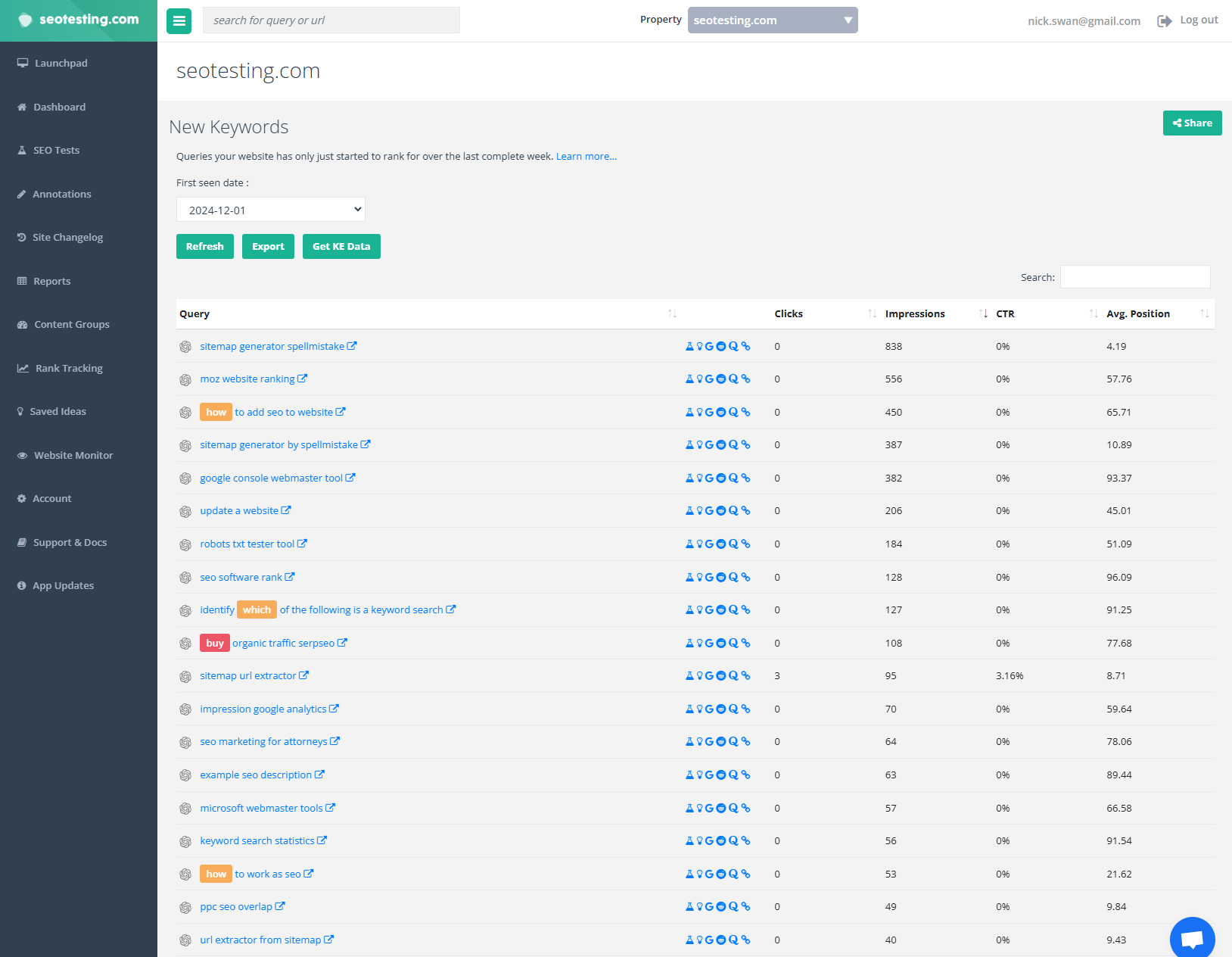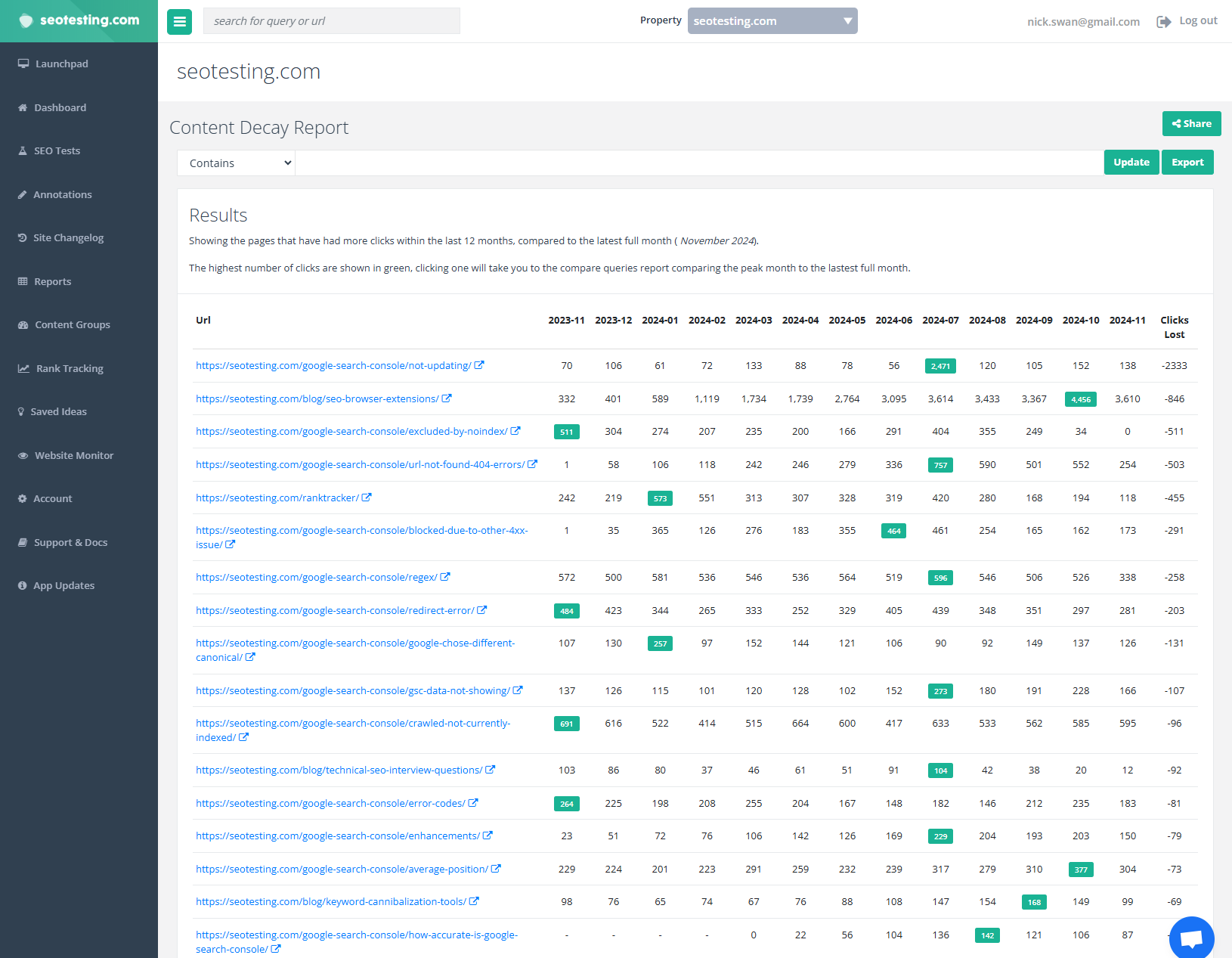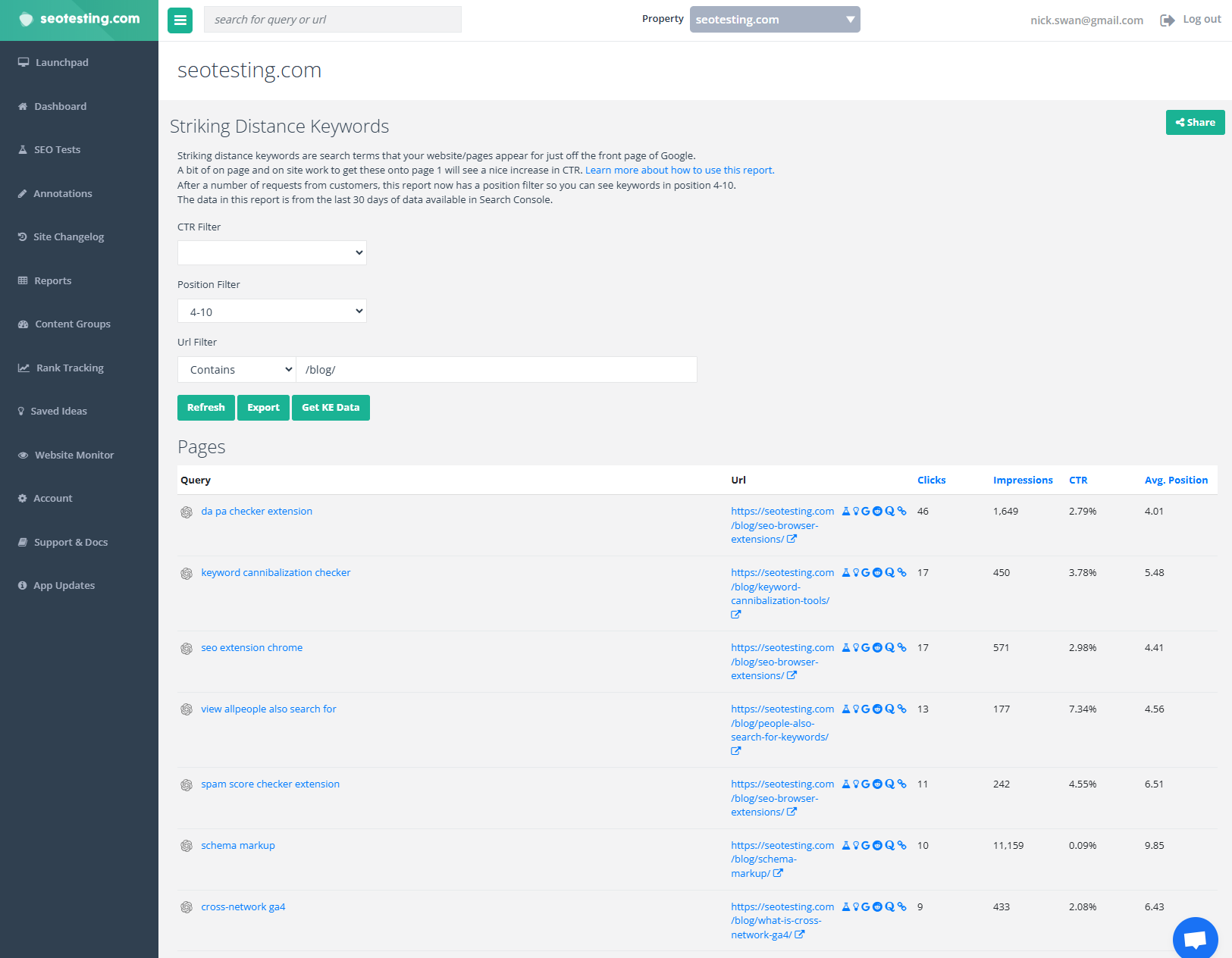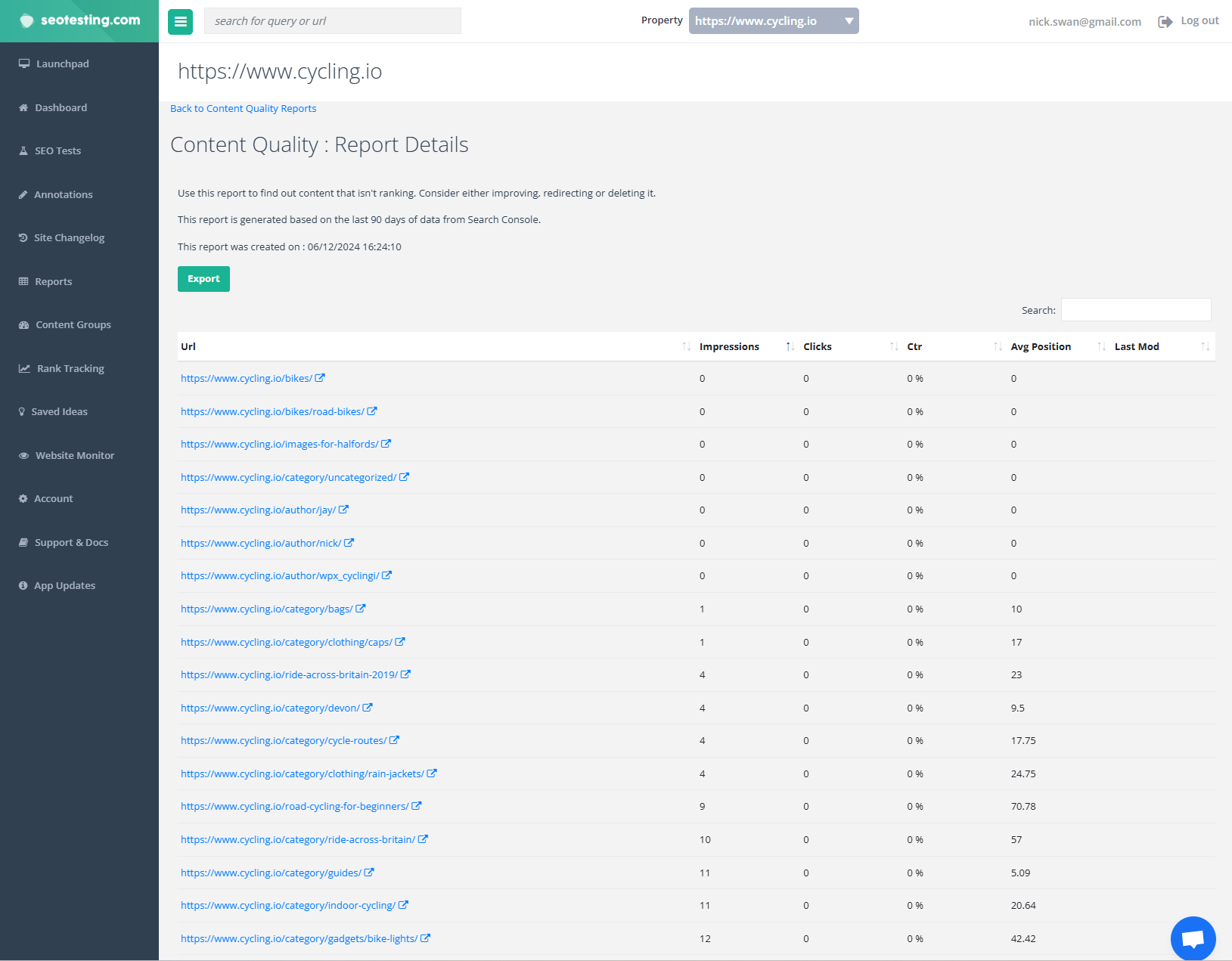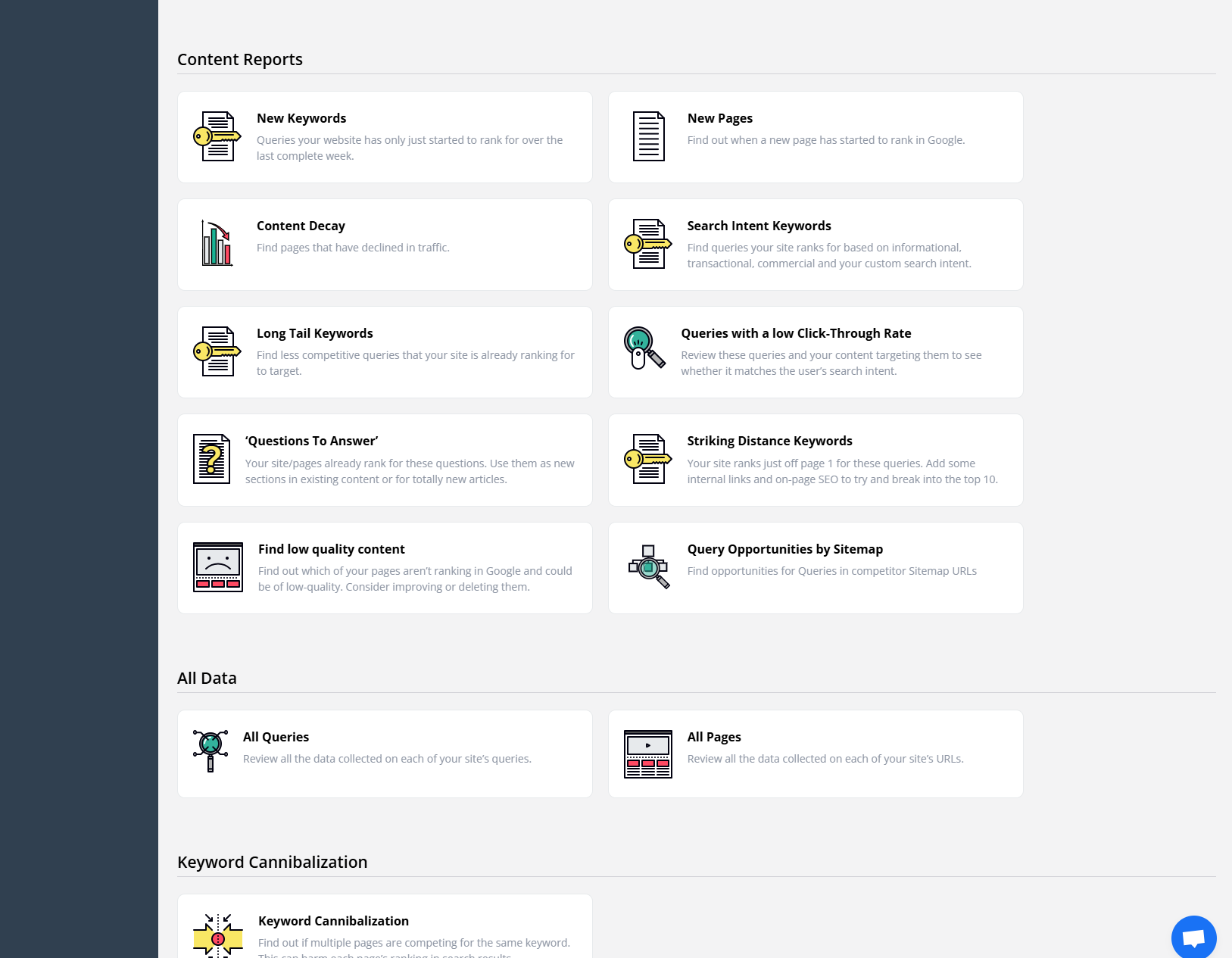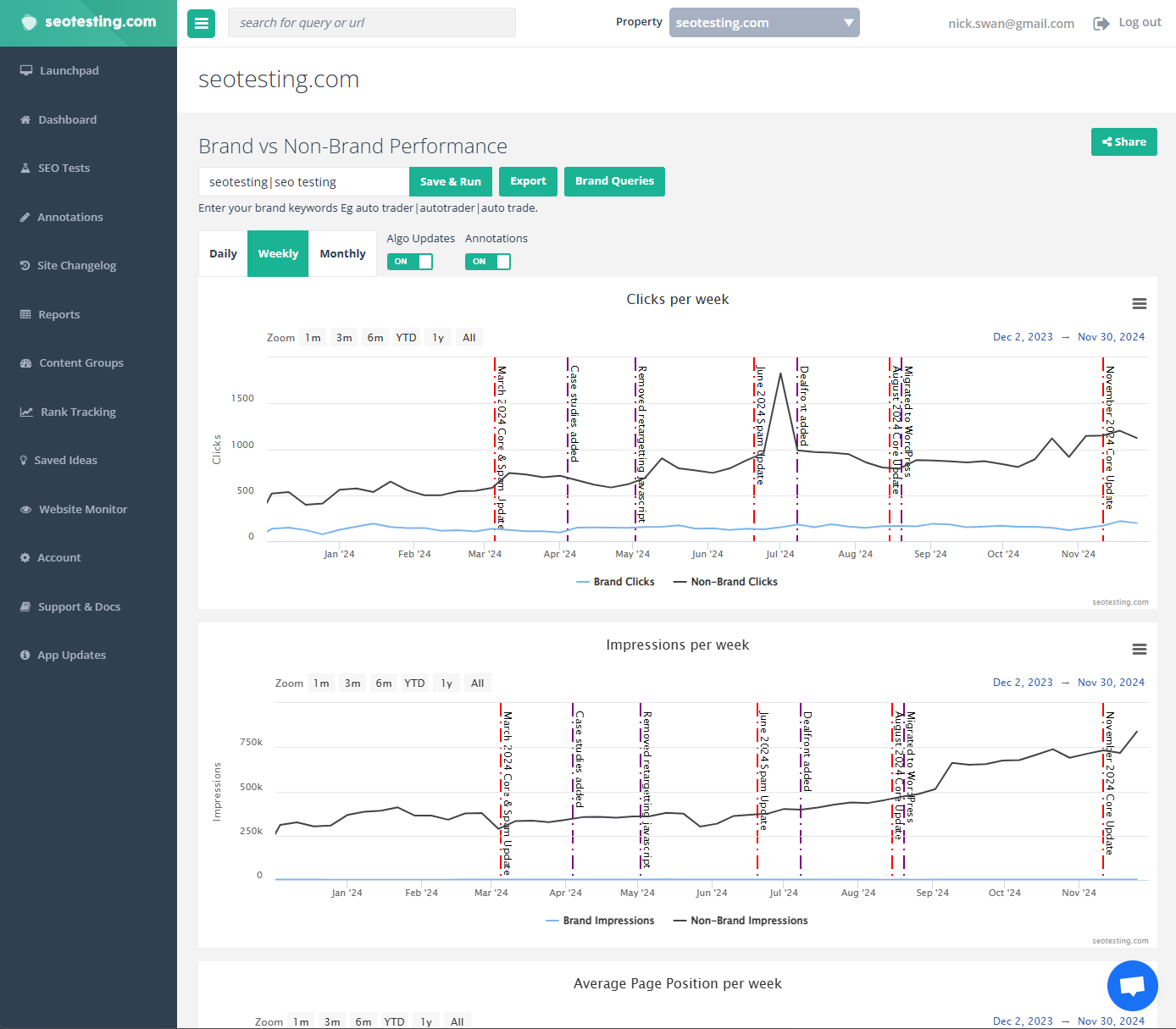Turn Google Search Console data into winning content strategies
- Revive declining pages with the Content Decay report.
- Discover quick wins with the Strike Distance Keywords report.
- Use the Content Quality report to find thin content and pages that Google doesn’t like.




